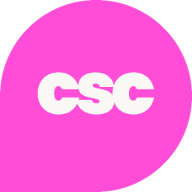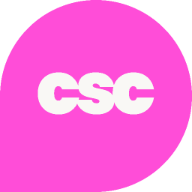This article is based on a presentation given by BJ at our Customer Success Festival, Las Vegas in 2024.
Catch up on this presentation, and others, using our OnDemand service. For more exclusive content, visit your membership dashboard.
Climbing the career ladder from Customer Success Manager (CSM) to Chief Customer Officer (CCO) is more competitive than ever.
Simply being good at your job isn’t enough; you need a proactive strategy, a broad skill set, and the mindset of a leader long before you earn the title.
Having spent years moving from an individual contributor role to an executive seat in early-stage startups and high-growth tech companies, I’ve learned what it takes to not only move up but thrive in senior leadership.
In this article, I’ll share the tactics that helped me rise through the ranks, from mastering revenue management to building relationships that open doors for future opportunities.
The evolution of a customer success career
For those of you still determining your career path, it's crucial to recognize that executive roles in customer success are quite different from CSM roles.
They require a distinct skill set, and while it may seem obvious, the two roles barely resemble one another in practice.
There are many rich and varied career paths within customer success. Becoming a CCO is just one of many possibilities. You might continue along the individual contributor path, become more specialized in a particular area, or take a team lead role.
Each of these paths can lead to fulfilling and financially rewarding careers.
Leadership responsibilities
When you step into leadership, your responsibilities will likely include some or all of the following: managing teams, owning a budget, and driving strategy for the entire organization.
These responsibilities are quite different from the day-to-day work of a CSM or a Customer Success Team Lead.
If you're currently a CSM, you may look at leadership and think, “Do I really want this?” It’s a valid question to posit.
Leadership can make you miss the simplicity of CSM work. I certainly have moments when I look back and think about how much simpler life was when I was directly working with clients.
Deciding if leadership in customer success is for you
If you're thinking about pursuing leadership in customer success, it’s essential to ask yourself how you'd like to spend your days. The responsibilities of a CCO are more strategic and organizational, with less direct customer interaction. For some, that's exciting; for others, it may not be the right fit.
If you still feel that leadership in customer success is the path you want to pursue, that's fantastic. But remember, it’s not for everyone. There are numerous paths within customer success, and each has its own set of rewards.
Let’s get into how you can climb that CS career ladder.
Be exceptional in your current role
The first piece of advice I’d give is simple but powerful: be great at your current job.
I know this might sound a bit obvious, but being an outstanding CSM and a great employee is the foundation for everything that follows.
Stand out within your team. Be the one to raise your hand when new projects or initiatives come up. These opportunities will give you valuable experience and broaden your skill set.
Develop strong relationships with your champion clients. These clients can be instrumental in boosting your career because they often become the face of your company—appearing on the website, in case studies, and so on. If you’re the one who helped build that relationship, it’s a huge asset that can make you stand out.
Another way to differentiate yourself is by getting reviews and testimonials. For instance, in the tech world, platforms like G2 are crucial. If you can get glowing reviews from your clients, you’ll not only be seen as someone who brings tremendous value to the company but also as someone who understands how to leverage relationships for mutual success.
Be proactive, not reactive
We’ve probably all heard this advice throughout our customer success careers: focus on being proactive rather than reactive. It’s easy to fall into a reactive mode, where you're just responding to issues as they come up.
But if you consistently demonstrate the value of a proactive CSM relationship, you’re showing that you understand how your role aligns with and impacts overall company objectives.
Make your manager's job easier
Here’s a tip that might seem small but can have a significant impact: make your manager’s job easier.
Identify the tasks or responsibilities that your manager may not enjoy, and if you're good at them, take them on. By doing so, you’ll make a positive impression and be seen as a leader within your team.
Be clear about your career ambitions
One thing I’ve noticed as a leader is that people who make their career ambitions clear tend to get ahead. When you’re open and vocal about your goals, you stay top of mind for leadership when new opportunities arise.
If I know someone on my team wants to take on more responsibility—whether it’s becoming a team lead, managing a project, or stepping into a new role—I’ll think of them first when those opportunities come up.
In short, being great at your current job, building strong relationships, staying proactive, making your manager’s life easier, and being vocal about your career goals are all ways to stand out and move up the ladder in customer success.
Understand your organization's career pathing
An important part of moving up the career ladder is understanding your organization’s career pathing. Not every company will have a formal career progression structure, but many do.
If your company does, make sure you’re fully aware of the milestones you need to hit in order to move up in title, compensation, or level of responsibility. It’s crucial to be hyper-aware of what’s required to progress within your organization.
However, if your company doesn’t have an established career pathing system—and many don’t—don’t be afraid to talk to your manager about creating an informal one. This allows both you and your manager to have a clear understanding of what it will take to advance your career.
It also signals to your manager that keeping you happy and fulfilled in your role requires opportunities for growth and progress.
Have regular career conversations with your manager
It’s important to regularly talk to your manager about your career goals, but be mindful of how often you bring it up. You don’t want every one-on-one meeting to be solely about your career ambitions, as it can become a topic your manager may start to dread.
Instead, find a balance where career discussions are a regular but thoughtful part of your conversations.
Make it clear that you’re serious about your career path—not just inspired after a weekend of reflection, only to return to the day-to-day grind without follow-up.
Consistency is key. By having these conversations periodically, you show your manager that your career ambitions are a priority for you.
Also, if you have the opportunity to meet with your skip-level manager, make sure to discuss your aspirations with them as well. The more people in leadership who are aware of your goals, the better.
Develop a comprehensive skill set and expert experience
As you progress towards roles like CCO, VP of Customer Success, or similar positions, it’s important to recognize that the required skill set for these roles is broad and deep.
If you examine the job descriptions for these executive positions, you’ll notice a wide variety of responsibilities. One key element that stands out across the board is owning revenue.
If your goal is to become a CCO, having experience in managing and driving revenue is crucial. I’ve worked in organizations where customer success teams owned the renewal process, and others where they didn’t.
In some cases, if there was an expansion opportunity, it was passed along to the sales team. But if you want to be on the CCO path, you absolutely need to own revenue at some point in your career.
This experience will help you build a strong foundation in understanding the financial impact of customer success and positioning yourself as a business leader.
Master the tools and vendor relationships
In addition to revenue experience, a deep understanding of customer success tools and vendor relations is critical.
Tools like Gainsight, Totango, and Salesforce are central to managing customer relationships and performance metrics. These are the languages spoken in board meetings when executives review how the company performed over the last quarter.
So, becoming fluent in these tools and understanding how to implement them successfully is incredibly important.
Vendor relationships
Beyond mastery of tools, strong vendor relationship skills are also key. This includes the ability to procure, negotiate, and implement tools effectively.
When you can confidently manage these relationships, you demonstrate an essential aspect of leadership—knowing how to balance operational efficiency with strategic investments.
Develop people management and leadership skills
Of course, one of the most critical aspects of being a CS executive is leading and managing a large organization. If you’re currently an individual contributor, seek out opportunities to step into leadership roles.
This could mean becoming a team lead, running initiatives, or managing programs within your organization. These experiences will help you build the foundational leadership skills you need.
When you move into leadership, remember that the role is not about you—it’s about developing others. Your success as a leader is measured by the success of the people you lead and your team's overall performance.
Leadership development is something you gain through experience, but you can also accelerate your growth by taking classes or workshops on people management.
Learning specific approaches to leadership, team development, and management will not only help you grow, but also position you to create an environment where others can thrive.
Be proactive in your career growth
One of the most important things you can do is to be proactive in your career development. This means actively engaging with the broader Customer Success community.
I recommend joining customer success groups—whether local, national, or even global. These groups are a great way to stay informed about industry trends, share best practices, and uncover new opportunities.
By joining these networks, you not only stay up to date but also create chances to build your personal brand. You can even host local events or meetups, positioning yourself as a thought leader in the space.
Building a personal brand is invaluable as you progress in your career, especially as you look to step into leadership roles.
Keep an eye on opportunities
There are many paths to an executive role in customer success. For some, it’s the traditional route of starting in a lower-level role and gradually working your way up over time.
Others might find themselves as early employees at a startup and naturally grow alongside the organization as it scales. Both paths have their merits, but for most of us, it comes down to actively identifying and seizing opportunities as they arise.
As you climb the ladder, the number of executive roles available becomes more limited. There are plenty of CSM roles out there, but VP of CS or CCO roles are fewer and far between. So, when opportunities come up, be prepared to go after them aggressively.
Aim high and plan for the future
In addition to pursuing immediate opportunities, take time to look at aspirational roles—those that might seem out of reach today.
Examine the responsibilities and experience required for these roles and ask yourself: what skills or experiences do I still need to develop? This exercise helps you identify the gaps in your current skill set and build a roadmap for achieving your long-term career goals.
Being proactive in both developing your skills and pursuing opportunities is essential for moving into a leadership role in Customer Success. The more intentional you are in charting your path, the more likely you are to make it to the top.
Think and act like a leader
For those just starting their careers, it’s important to begin thinking and acting like a leader.
You’ll often find that some of your managers, directors, or even higher-level executives aren’t that far removed from where you are now in terms of their career journey. Shifting your mindset to think like a leader, even if you're not in a leadership role yet, is key to positioning yourself for future opportunities.
One of the first steps in this leadership mindset is understanding your organization holistically. Leaders don’t just think about their own roles or departments—they consider the bigger picture and how different pieces of the organization fit together. This broader perspective will help you make decisions that align with the company’s overall goals, which is crucial as you move up.
Avoid the "us vs. them" mentality
A critical lesson I’ve learned in my career is to avoid the “us versus them” mentality when it comes to leadership.
It’s easy—especially at the CSM or individual contributor level—to fall into the trap of thinking that the executives behind closed doors are making decisions without understanding the impact on the team, or worse, acting in their own self-interest.
But having been on both sides of the door, I can tell you that it’s rarely like that. Leaders are just regular people trying to make the best decisions they can for the organization.
If you can avoid viewing leadership as "the enemy," you’ll stand out as someone who understands the company from a holistic perspective and who’s able to empathize with both sides. That kind of insight is incredibly valuable as you grow in your career.
Develop your leadership philosophy
Finally, start thinking about your own leadership philosophy and approach. As your manager or director makes decisions, take a moment to consider how you would have handled the situation.
Why did they make the choices they did? What would you have done differently? This process will help you better understand the reasoning behind leadership decisions, and if you have a strong relationship with your manager, don’t hesitate to ask them why they made certain calls.
By engaging in this kind of critical thinking, you’re preparing yourself for future leadership roles. You’ll develop a deeper understanding of the challenges and complexities that leaders face, and you’ll be better equipped to handle those situations when it’s your turn to lead.
Leadership in mid to senior management roles
If you're already in a mid to senior management role, many of the previous insights might sound familiar—they're probably things you've already put into practice.
However, as you continue to progress in your career, there are some key strategies that can help set you apart as a leader.
Leaders eat last
One of my favorite principles in leadership is the idea that "leaders eat last."
As a leader, it’s essential to focus on your team, not on yourself. Your success comes from the success of the people you lead. By building a culture of bi-directional trust, you create an environment where your team not only respects you but trusts your decisions.
When your team believes in you, they’re more willing to give their best effort. If you say, “We’re all pushing down on the gas now,” they’ll know you mean it and will push just as hard.
Find your "magnet people"
Another critical aspect of leadership is finding and building strong relationships with your "magnet people." These are individuals, either in senior roles or peer leadership positions, who naturally draw others to them and foster collaboration.
For example, the CEO who hired me at my current company was someone I worked closely with as a product and CS lead at a previous organization.
These relationships are invaluable as you progress in your career because when leaders move to new companies, they often look to build a trusted team around them. Being top of mind for those opportunities can significantly boost your career.
On the flip side, as you move into leadership roles, you'll want to build your own network. When you get that next big role, having a trusted group of people you can bring with you can quickly strengthen your team.
It’s all about trust—finding people who you know can deliver and building relationships that will support you in future roles.
Build cross-department relationships
In leadership, strong relationships across different functions are vital—especially with product and sales teams. There's often tension between customer success and sales in many organizations, which can hinder overall success.
Overcome this by over-communicating and establishing a foundation of trust. When CS and sales are aligned, it’s remarkable what can be achieved. And while we often joke that “it’s always sales' fault,” the reality is that mutual respect and collaboration between departments can break down those barriers and lead to better outcomes for the entire organization.
Scope matters as you move up
As you move into senior roles, think carefully about the type of organization you want to lead. Scope matters. For example, if you aspire to work in large enterprises, it’s essential to gain experience managing large teams with multiple layers.
Enterprise companies with thousands of employees will be looking for leaders who have dealt with complex, multi-tiered organizations.
On the other hand, if you prefer working in startups—as I do—focus on gaining experience with emerging technologies and dynamic, smaller teams. I’ve always been drawn to startup tech companies, so I’ve made sure to align my career experiences with this focus.
The size and scope of your team, the company, and the industry should all match where you want to be now and in the future.
Industry experience counts
Finally, the type of industry you work in matters more as you rise through the ranks. CEOs and boards are often looking for leaders with specific industry experience to ensure a smooth fit.
While some may prefer a diverse background, in many cases, companies want leaders who have a deep understanding of the sector they're working in. So, as you plan your career, consider how your industry experience will align with your future goals.
Ultimately, leadership is about building trust, understanding the scope of your experience, and aligning your career with the type of organization and industry where you want to succeed. Keep these factors in mind as you move forward, and you'll set yourself up for long-term growth and success.
Stay proactive in your career
Building toward a leadership role in Customer Success requires consistent proactivity in your career. If you're part of a large CS team, the likelihood of being singled out for leadership opportunities without making your aspirations known is slim.
Leadership won’t automatically assume you’re interested in moving up unless you communicate that clearly. Be top of mind for your manager and even your skip-level managers when opportunities for growth arise.
It’s also helpful to remember that many of the leaders around you are just a few steps ahead in their career journey. This is something I’ve reflected on throughout my own career. The gap between you and those leaders is often not as large as it seems.
Once you step into leadership rooms, it’s important to manage feelings of imposter syndrome. It’s natural to have moments of doubt, but finding a mantra or strategy to overcome those feelings is key.
As you take on new responsibilities, the challenges will get bigger and the stakes higher—those are the defining moments that will set you apart and help you grow.
Final thoughts
I want to finish with a quote that has resonated with me throughout my career, from the great Michelle Obama.
Reflecting on her experience of becoming the First Lady and entering rooms with the most powerful people in the world, she said:
I have been at probably every powerful table that you can think of...I have worked in corporations, served on corporate boards...I have sat in at the U.N.: They're not that smart.
It’s a reminder that no matter where you find yourself, you deserve to be there. Embrace those moments, trust in your abilities, and continue to push forward.



 Follow us on LinkedIn
Follow us on LinkedIn







